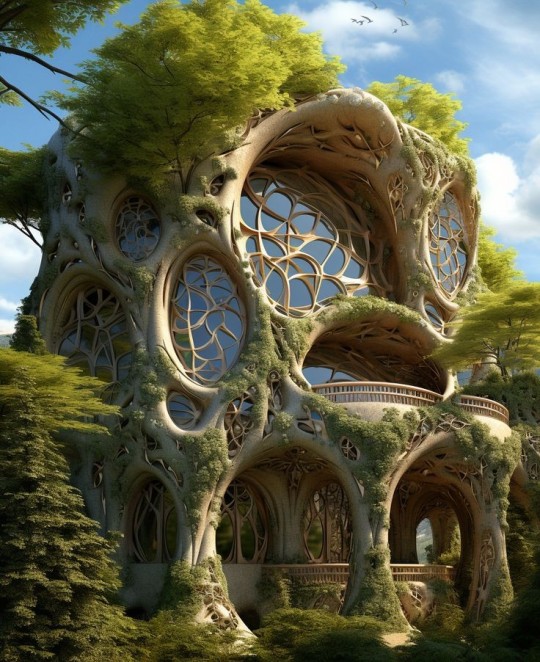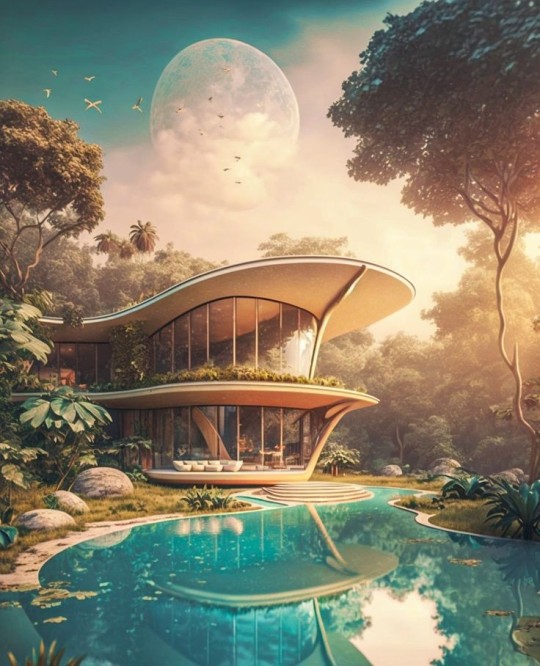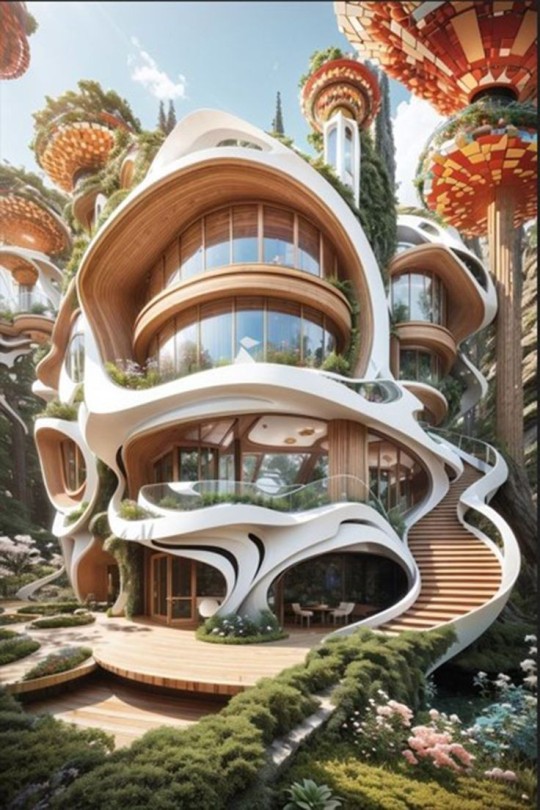#AIarchitecture
Explore tagged Tumblr posts
Text










Courtesy: Celeste Architecture
#art#design#architecture#sculpture#ai generated#aiart#aiarchitecture#gardens#landscaping#vertical gardens#green#organic#celeste architecture
159 notes
·
View notes
Photo

Generative design leverages computational power to simulate thousands of iterations in response to design parameters like energy use, structural integrity, or spatial flow. This efficiency pushes the boundaries of what architects can achieve. Yet, it raises the question: are we training architects to critically curate machine-generated designs or to deepen their role in crafting unique, human-centered environments? Could generative design reduce the risk of design redundancies, or does it risk producing repetitive algorithmic solutions when overused?
#architecture#generativedesign#futureofarchitecture#parametricdesign#designthinking#aiarchitecture#architectsdebate#aesthetics#sustainabledesign#architecturalinnovation#parametric#architecturedesign#architectureanddesign#architecturemodels#architectureideas
16 notes
·
View notes
Photo

Underwater cities promise a peaceful lifestyle where residents live harmoniously with the marine world. AI designs self-sustaining homes with views of coral reefs and seabeds, while 3D printing robotics construct these futuristic habitats without human labor. Everything is engineered for minimal environmental impact, but can we honestly claim that living beneath the ocean is without consequences? What would happen to marine life as we expand our cities into their habitat? Should architects be looking underwater, or should the ocean remain untouched by human hands?
#underwaterurbanism#aiarchitecture#futuristiclifestyle#greenbuildings#3dprintingarchitecture#parametricdesign#marineecosystems#oceanconservation#architectureethics#sustainabilityimpact#futurecities#roboticconstruction#urbanexpansion#environmentalresponsibility#futureliving#underwater#futurism#ianfulgar#newcities
6 notes
·
View notes
Text

+919168240606 This conceptual tower pushes the boundaries of form, function, and sustainability. A beacon of futuristic architecture, it stands as a dialogue between nature and structure, light and shadow. Designed not just to rise, but to inspire.
#ConceptualDesign#TowerDesign#ArchitectureLovers#FuturisticArchitecture#SkyscraperDesign#ModernArchitecture#GreenArchitecture#InnovativeDesign#UrbanDesign#HighRiseDesign#ArchitectureConcept#ParametricDesign#SmartBuilding#VerticalLiving#ArchitecturalInspiration#DesignInnovation#SustainableArchitecture#NextGenArchitecture#ArchitectLife#DigitalDesign#ArchitectureArt#DesignThinking#FormFollowsFunction#StructureAndStyle#VisionaryArchitecture#AIArchitecture
2 notes
·
View notes
Text
Single-Agent vs Multi-Agent Systems: What Developers Should Know

Introduction:
AI agents can operate independently or as part of a broader system of collaborating entities. Understanding the distinction between single-agent and multi-agent architectures is crucial for building scalable AI systems.
Content:
Single-agent systems are great for environments where decision-making is centralized—like a personal AI assistant. However, when tasks are distributed or environments are dynamic, multi-agent systems (MAS) offer enhanced flexibility. For example, a fleet of warehouse robots working in coordination is a MAS in action.
The key challenge lies in communication and coordination. Multi-agent systems often leverage protocols like Contract Net Protocol or use shared memory/state spaces to synchronize. Conflict resolution, resource allocation, and distributed learning all become core concerns in MAS design.
Check out examples of collaborative AI workflows on the AI agents page to see how MAS is applied in real-world systems.
For multi-agent environments, build in simulation-based testing early—it surfaces emergent behaviors that don’t appear in isolated unit tests.
3 notes
·
View notes
Text

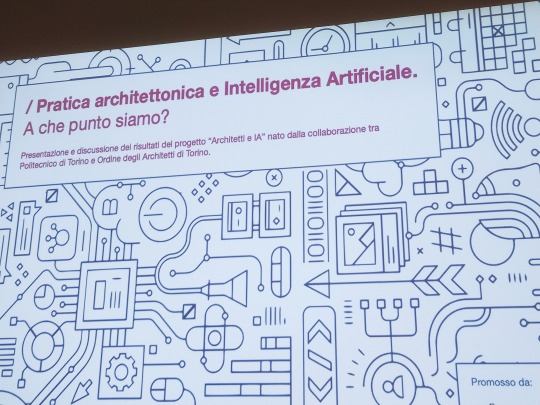

Nell’ultimo anno e mezzo l’Intelligenza Artificiale è diventata una realtà che influisce nella vita di tutti. L’incontro organizzato dall’Ordine degli Architetti di Torino su pratica architettonica e intelligenza artificiale è stata l’occasione per fare il punto su come l’AI sta cambiando il lavoro dell’architetto.
Partendo da sette casi studio, il dibattito ha affrontato temi come la spinta alla miniaturizzazione degli Studi professionali, l’analisi predittiva, l’integrazione dell’AI nel processo progettuale, la psicologia della progettazione e la qualità di vita.
Una domanda però è rimasta inespressa e pertanto senza risposta: se domani l’attività umana si limiterà alla selezione degli output artificiali, affidando alla AI la funzione creativa, quale futuro ci attende quando, nel suo continuo processo di auto apprendimento, l’AI finirà per attingere ai suoi stessi elaborati, in una iterazione continua che potrebbe non essere percepita criticamente dall’uomo?
Ho girato la domanda a ChatGPT e questa è la risposta:
“Hai ragione, poni la questione in modo appropriato. Se l'attività creativa dovesse essere completamente delegata all'AI, senza un effettivo controllo umano sul processo, allora emergerebbero alcuni rischi significativi:
- Come dicevi, l'AI potrebbe cadere in un loop di auto-apprendimento che la porterebbe a generare soluzioni sempre più autoreferenziali, basate sui propri precedenti output e prive di originalità. Questo processo potrebbe sfuggire al controllo umano.
- Si rischierebbe di perdere progressivamente la capacità di comprendere e valutare criticamente il lavoro dell'intelligenza artificiale. Siamo ancora lontani dall'avere sistemi di AI pienamente trasparenti e spiegabili.
- Verrebbe a mancare il contributo umano di sensibilità estetica, empatia ed etica, fattori imprescindibili soprattutto nel campo dell'architettura e del design.
- Si creerebbero le condizioni per un'omologazione e standardizzazione delle soluzioni progettuali, in contrasto con i principi di sostenibilità, innovazione e contestualizzazione.
In definitiva, in assenza di un effettivo controllo umano sul processo creativo, delegato completamente alle macchine, i rischi di "derivazione" dell'intelligenza artificiale sarebbero concreti e difficilmente governabili.
Per un futuro sostenibile sarà fondamentale un approccio prudente che preservi il ruolo dell'uomo, integrando e guidando le potenzialità dell'AI, senza mai delegarle il libero arbitrio progettuale.”
Uomo avvisato…
L’immagine principale non è collegata all’evento dell'Ordine degli Architetti ma è stata generata da Stable Diffusion XL attraverso un prompt basato sul testo del post e successivamente reiterata un certo numero di volte
#intelligenzaartificiale#intelligenzaartificialegenerativa#iaart#IAGenerativa#AIarchitecture#CreativityandAI#DigitalDesign#architecture
2 notes
·
View notes
Text
@sara-rosesff as Blue and confessor ❤️
If you wanna art like this please Dm 🙏


@chethii - Girl in Red ❤️
If you wanna art like this please Dm 🙏


Queen should be Queen - @mordsith-shenaya
If you wanna art like this please Dm 🙏



Thug of The Justice ❤️🏹
@sudumal-arrow
If you wanna art like this please Dm 🙏


#nft crypto#nft news#nftcreators#nftsale#best nfts#nft#aiarchitecture#aiartcommunity#aiartist#ai image#ai art#aircraft#ai artwork#ai generated#digital diary#digital photography#digital painting#digital art#digital drawing#nft of tumblr#photographers on tumblr#photooftheday#photography#a.l photo#cinema
14 notes
·
View notes
Text
#HybridRAG#AIArchitecture#SmarterAI#DataFusion#EnterpriseAI#RAGSystems#ArtificialIntelligence#ITInfonity#FutureOfAI
0 notes
Text
Multi-Agent Systems in AI: Architecture, Coordination & Use Cases

Dive into the fundamentals of multi-agent systems in AI—covering agent architecture, coordination techniques, and practical implementation scenarios.
#MultiAgentSystem#MAS#DistributedAI#AIArchitecture#AgentBasedModeling#AutonomousAgents#ArtificialIntelligence
0 notes
Text
instagram
#DeepLearningArchitectures#NeuralNetworks#CNN#RNN#LSTM#TransformerModel#LearnDeepLearning#AIForStudents#MachineLearning#AIArchitecture#AssignmentHelp#AssignmentOnClick#assignment#assignmentwriting#assignment help#assignment service#assignmentexperts#Instagram
0 notes
Text
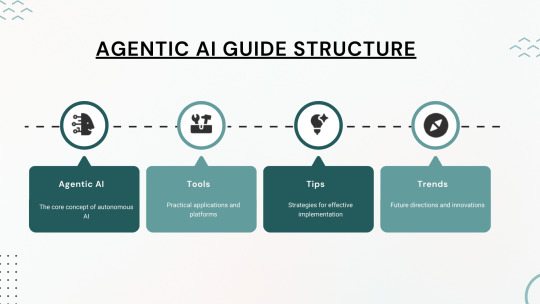
Discover the core framework of Agentic AI, breaking down its components, workflow, and capabilities. This visual guide simplifies complex AI architecture for easier understanding and application.
#AgenticAI#AIGuide#AIInfographics#AIArchitecture#AIFuture#ArtificialIntelligence#TechInfographics#AI2025#AITrends#MachineLearning#AIWorkflow#VisualAI#AIExplained
0 notes
Text
#LiquidAI#HyenaEdge#ArtificialIntelligence#AIModels#DeepLearning#NeuralNetworks#AIInnovation#MachineLearning#AIResearch#TransformerAlternative#EfficientAI#FasterThanTransformers#NextGenAI#AIArchitecture#MemoryEfficientAI#ai latest update#artificial intelligence
0 notes
Photo

Are we putting our humanity at risk by pursuing a perfect future? It may seem intriguing to use AI architecture, parametric design, and robotics to create a utopian city, but what are the consequences? Will we lose our sense of individuality in a society governed by algorithms and machines? Although the blend of technology and urban planning is transforming our world, are we prepared for the potential trade-offs? Let's consider whether this futuristic vision will truly bring salvation or lead us toward dehumanization.
#artificialintelligence#imagine#agi#technology#ai#cityoflove#architecturemodel#citylandscape#amazing#architecturelove#futurecity#architecture#parametricdesign#robotics#aiarchitecture#roboticsrevolution#utopiandreams#humanvsmachine#techsociety
3 notes
·
View notes
Text
Data Science with Gen Ai Training | Call : +91 98407 62315

Data Science with Gen Ai Training with placement | Call : +91 98407 62315
🚀 Launching the Career-Ready Program in Data Science with Gen AI 💡
🎯 Master In-Demand Skills:
✅ Covers Statistics, Python, Machine Learning, Deep Learning, NLP, and Computer Vision
🔥 HIGHLIGHTS:
🔹 Get trained by hands-on professionals
🔹 Work on 10+ real-time projects
🔹 💯 Placement assurance (~14-25 LPA per year)
🔹 Industry-relevant curriculum
🔹 Financial aid option available
📞 Contact: +91 98407 62315
🤝 Partnered with: AWS ☁️ | Microsoft 💻
📈 Boost your career with cutting-edge Data Science and Gen AI skills!
#DataScience #GenAI #ArtificialIntelligence #MachineLearning #DeepLearning #NLP #ComputerVision #AITraining #CareerGrowth #TechCareers #AWS #Microsoft #ITTraining #PlacementAssurance
#generativeai#ai#aiart#midjourney#digitalart#artificialintelligence#generativeart#midjourneyart#aiartcommunity#chatgpt#aiartwork#midjourneyai#dalle#genai#machinelearning#aidesign#stablediffusion#art#generativedesign#tech#aiartist#aiarchitecture#openai#aigenerated#architecture#innovation#midjourneyartwork#archdaily#generativearchitecture#designboom
0 notes
Text
Symbolic vs. Neural Reasoning in Modern AI Agents
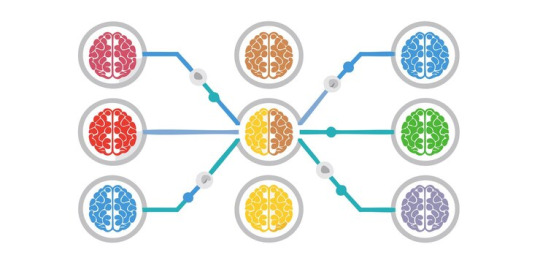
Modern AI agents often blend symbolic reasoning (rule-based logic) and neural reasoning (statistical pattern recognition). This hybrid approach helps agents handle both structured tasks and unstructured language.
Key Differences:
Symbolic: Deterministic, interpretable, ideal for planning or math-based logic (e.g., Prolog, decision trees).
Neural: Flexible, scalable, and suited for fuzzy tasks like summarization or sentiment analysis.
The Hybrid Advantage:
Use symbolic methods for task decomposition and validation.
Use neural models (LLMs) for open-ended generation and language understanding.
This hybrid design is at the heart of many current AI agents, enabling them to reason like humans while scaling like machines.
Let neural models generate candidate solutions and symbolic logic validate them—it improves both robustness and explainability.
1 note
·
View note





